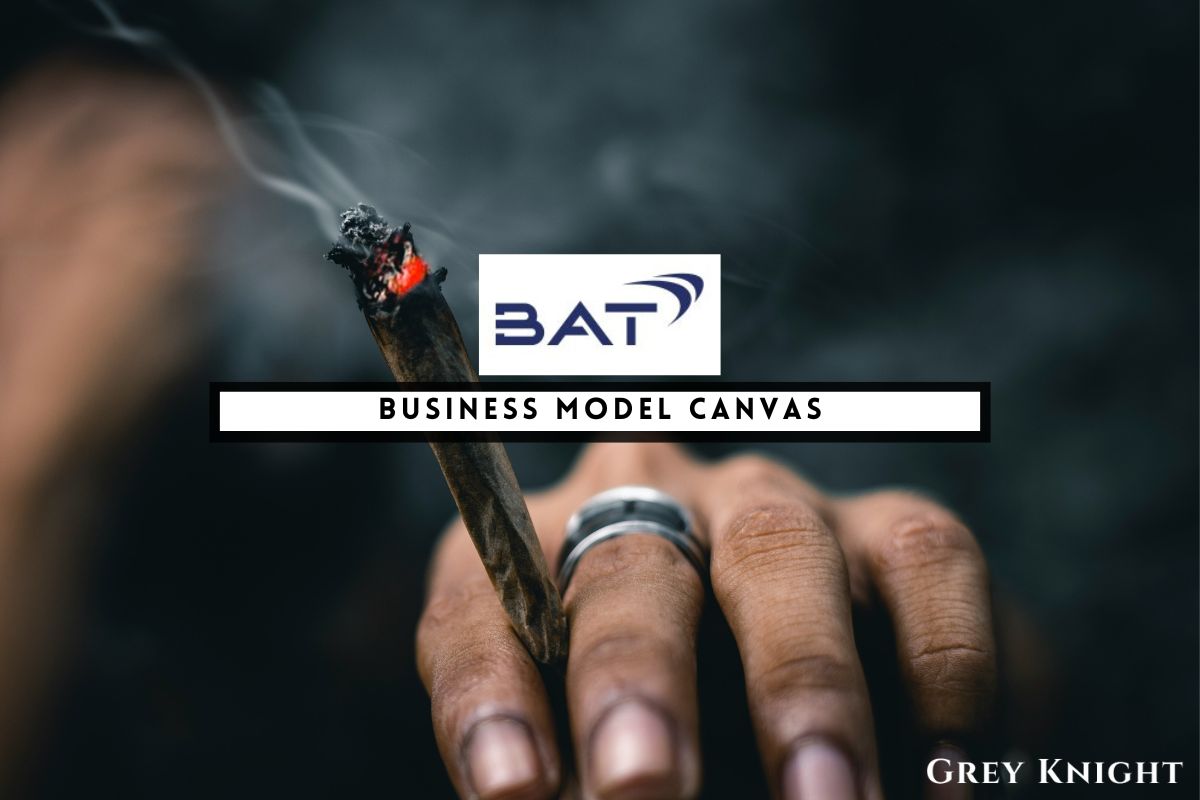Table of Contents
ToggleA Brief History of BAT
British American Tobacco (BAT) is a multinational tobacco company headquartered in London, United Kingdom. The company was formed in 1902 as a joint venture between the Imperial Tobacco Company of the United Kingdom and the American Tobacco Company.
BAT has a long and storied history in the tobacco industry. In the early 20th century, the company rapidly expanded its operations through acquisitions and the establishment of new manufacturing facilities. By the 1940s, BAT had become one of the largest tobacco companies in the world, with a global presence in over 50 countries.
In the following decades, BAT continued to grow and diversify its product portfolio, acquiring several other tobacco companies and expanding into new markets. The company has also expanded into the development and sale of electronic cigarettes and other next-generation tobacco and nicotine products.
In recent years, BAT has faced increasing scrutiny and regulation related to the health risks associated with tobacco products, as well as shifting consumer preferences and attitudes towards smoking. Despite these challenges, BAT remains one of the largest and most influential tobacco companies in the world, with a significant presence in both traditional and emerging markets.
Today, BAT continues to be a major player in the global tobacco industry, with a strong portfolio of well-known brands and a focus on innovation and sustainability. The company remains committed to meeting the evolving needs of consumers while also addressing the social and environmental impact of its products.
Who Owns BAT?
British American Tobacco p.l.c. is owned by a diverse group of shareholders including institutional investors, mutual funds, and individual investors. The top 10 shareholders of British American Tobacco, based on the most recent data available, are as follows:
1. BlackRock, Inc.
2. The Vanguard Group, Inc.
3. Capital Research Global Investors
4. Norges Bank Investment Management
5. Capital World Investors
6. Massachusetts Financial Services Company
7. Legal & General Group plc
8. Temasek Holdings (Private) Limited
9. Invesco Ltd.
10. State Street Corporation
These shareholders play a significant role in the company’s governance and decision-making processes, and their ownership stakes reflect their confidence in British American Tobacco’s long-term growth potential and financial performance.
BAT Mission Statement

British American Tobacco p.l.c. mission statement is to deliver shareholder value through sustained, long-term growth and to lead the industry in promoting the benefits of reduced-risk products. They strive to be the preferred partner for customers, suppliers, and society as a whole, while consistently delivering high-quality products and promoting responsible tobacco consumption. Their mission is grounded in their commitment to sustainability, innovation, and making a positive impact on the world.
How BAT Makes Money?
British American Tobacco p.l.c. operates on a business model focused on the manufacturing and sale of tobacco and nicotine products. The company generates revenue mainly through the sale of its cigarettes, cigars, and other tobacco products to customers worldwide. Additionally, it also earns income from its tobacco heating and vaping products, as well as through licensing and trademark agreements. With a strong global presence and a diverse portfolio of products, British American Tobacco p.l.c. continues to thrive in the tobacco industry and maintain a steady revenue stream.
BAT Business Model Canvas
The Business Model Canvas is a strategic management tool that provides a visual representation of a company’s business model. It allows organizations to outline and analyze key aspects of their business, including customer segments, value propositions, channels, customer relationships, revenue streams, key resources, key activities, key partners, and cost structure.
1. Customer Segments:
– British American Tobacco (BAT) targets a diverse range of customer segments, including adult smokers, tobacco retailers, wholesalers, and distributors.
– The company also focuses on niche markets within the tobacco industry, such as premium cigar smokers and smokeless tobacco consumers.
2. Value Propositions:
– BAT offers a wide range of tobacco products to meet the diverse preferences of its customers.
– The company emphasizes product quality, innovation, and responsible marketing and distribution practices.
– Additionally, BAT provides a variety of tobacco-related services, such as industry research and regulatory compliance support.
3. Channels:
– BAT utilizes a multi-channel distribution strategy, including direct sales to retailers, wholesalers, and distributors, as well as online sales through its e-commerce platform.
– The company also leverages partnerships with convenience stores, supermarkets, and other retail outlets to reach a broader customer base.
4. Customer Relationships:
– BAT maintains customer relationships through targeted marketing and promotional initiatives, as well as through customer service support for retailers and distributors.
– The company also engages with consumers through brand loyalty programs, product sampling events, and online community forums.
5. Revenue Streams:
– BAT generates revenue primarily from the sale of tobacco products, including cigarettes, cigars, and smokeless tobacco.
– The company also earns revenue from ancillary services, such as licensing agreements, product endorsements, and strategic partnerships.
6. Key Resources:
– BAT’s key resources include its global manufacturing facilities, distribution networks, research and development capabilities, and brand portfolio.
– The company also relies on human capital, regulatory expertise, and financial resources to support its operations.
7. Key Activities:
– BAT’s key activities include product development and innovation, manufacturing and production, marketing and sales, regulatory compliance, and industry advocacy initiatives.
– The company also engages in strategic acquisitions, partnerships, and investments to expand its market presence.
8. Key Partners:
– BAT partners with suppliers, contract manufacturers, and logistics providers to ensure a seamless supply chain and distribution process.
– The company also collaborates with retail partners, trade associations, and industry organizations to drive advocacy efforts and regulatory compliance.
9. Cost Structure:
– BAT’s cost structure includes expenses related to raw materials procurement, manufacturing operations, marketing and advertising, distribution, regulatory compliance, and research and development.
– The company also incurs costs associated with talent acquisition, training, and retention, as well as legal and regulatory fees.
BAT’s Competitors
British American Tobacco p.l.c. is a global tobacco company that competes with several other major players in the industry. Some of its top competitors include Philip Morris International Inc., Imperial Brands plc, Japan Tobacco Inc., Altria Group, Inc., and Reynolds American Inc. These companies all operate in the global tobacco market and compete for market share and consumer loyalty. With a strong portfolio of well-known brands, British American Tobacco p.l.c. remains a prominent player in this competitive industry.
BAT SWOT Analysis
Strengths:
1. Strong brand portfolio including popular brands like Lucky Strike and Dunhill.
2. Global presence in over 200 countries.
3. Diversification through tobacco and nicotine products.
4. Focus on research and development to create innovative products.
Weaknesses:
1. Decreasing cigarette sales due to health concerns.
2. Reliance on traditional tobacco products for majority of revenue.
3. Legal and regulatory challenges in various markets.
Opportunities:
1. Expansion into the growing e-cigarette and vaping market.
2. Strategic partnerships and acquisitions to strengthen market position.
3. Growing demand for reduced-risk products.
Threats:
1. Increasing regulatory restrictions on tobacco products.
2. Health awareness leading to declining smoking rates.
3. Intense competition in the tobacco and nicotine industry.
Concluding Analysis
In summary, the business model of British American Tobacco p.l.c. is one that has demonstrated resilience and adaptability in the face of industry challenges and changing consumer preferences. As an analyst, I am optimistic about the future of the company, especially in light of its continued investment in innovation and diversification. With a focus on sustainable practices and a commitment to meeting the evolving needs of consumers, I believe that British American Tobacco p.l.c. is well-positioned for long-term success in the global market.
Additional Resources
To keep learning and advancing your career, we highly recommend these additional resources:
Business Model Canvas of The Top 1,000 Largest Companies by Market Cap in 2024
A List of 1000 Venture Capital Firms & Investors with LinkedIn Profiles
Peter Thiel and the 16 Unicorns: The Legacy of Thiel Fellowship












